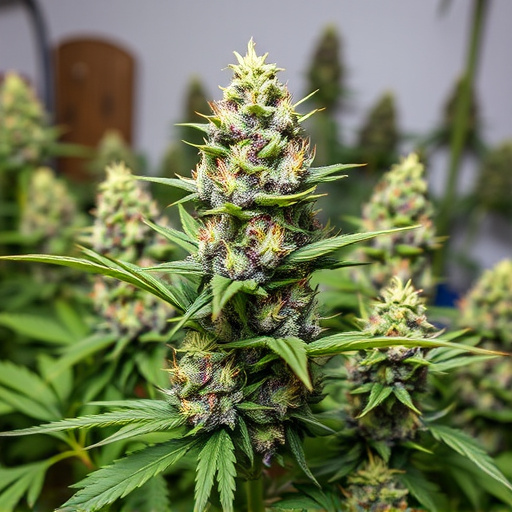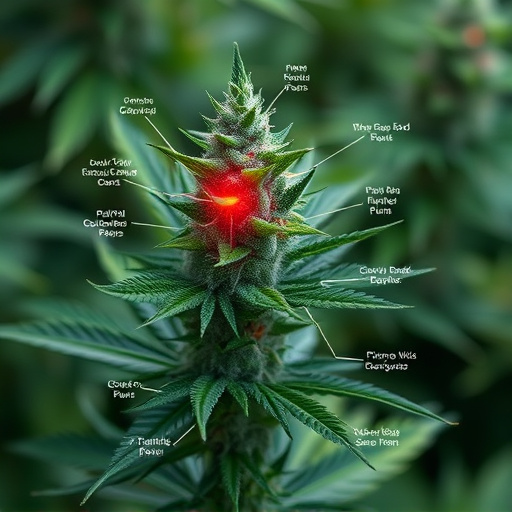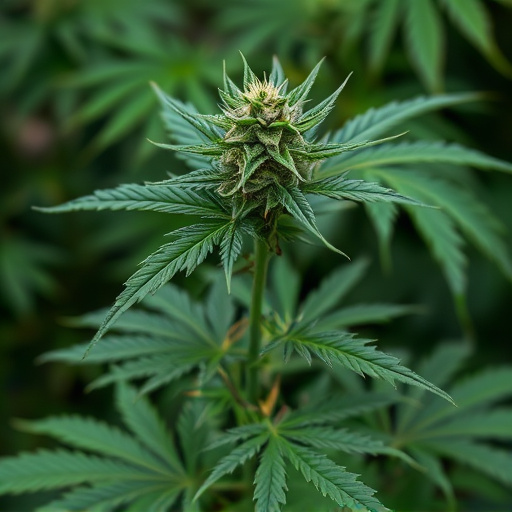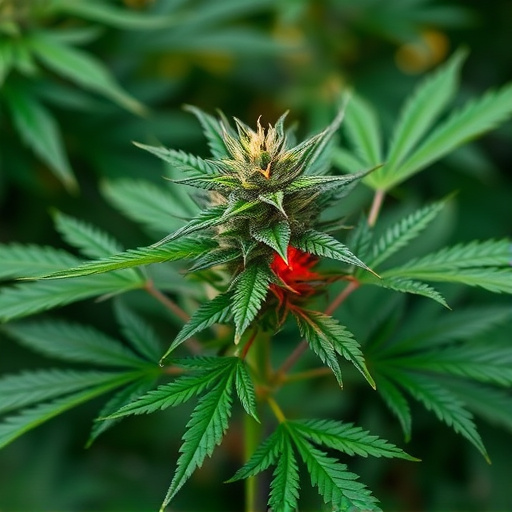Cannabis as a natural remedy for pain relief is backed by historical use and scientific documentation. Different strains, high in cannabinoids like THC and CBD, offer unique effects: Indica for relaxation and Sativa for energy. Selecting the right strain is crucial. Nutrition plays a significant role in enhancing cannabis' efficacy, particularly for pain management. Diet can support the endocannabinoid system, potentially reducing dosage needs. Food-cannabis interactions are complex; dietary choices impact potency, especially for strains used in chronic pain relief. Further research is needed to fully explore these applications.
“Wondering if your diet can enhance the effects of weed for pain relief? This article explores the fascinating connection between nutrition and cannabis efficacy. We delve into the diverse strains of cannabis known for their pain-relieving properties and how specific foods might amplify their benefits. Additionally, we explore the science behind food-drug interactions with cannabis, offering insights to maximize your wellness journey. Discover the potential synergy between diet, cannabis, and pain management.”
- Understanding Cannabis Strains and Their Effects on Pain Relief
- The Role of Nutrition in Enhancing Cannabis Efficacy
- Exploring the Science Behind Food-Drug Interactions with Cannabis
Understanding Cannabis Strains and Their Effects on Pain Relief
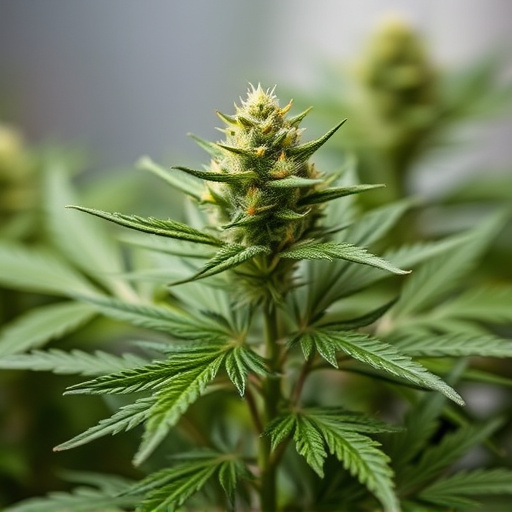
Cannabis has been used for centuries as a natural remedy, and its effectiveness in alleviating pain is well-documented. Understanding the various strains of cannabis and their unique effects on pain relief is essential when considering its therapeutic potential. Different strains contain varying levels of cannabinoids, such as THC (tetrahydrocannabinol) and CBD (cannabidiol), which are responsible for their distinct properties. For instance, some strains are known to offer potent pain-relieving benefits due to higher concentrations of these compounds.
When it comes to managing pain, specific strains of cannabis have proven beneficial. Indica strains, for example, are often preferred for their relaxing and sedative effects, making them useful for treating insomnia and muscle spasms associated with chronic pain conditions. On the other hand, Sativa strains are known for providing a more energizing and uplifting high, which can aid in alleviating stress and anxiety—common co-morbidities linked to persistent pain. Therefore, choosing the right strain based on individual needs is crucial in maximizing cannabis’s potential as a natural pain management tool.
The Role of Nutrition in Enhancing Cannabis Efficacy

The relationship between nutrition and cannabis efficacy is an intriguing aspect often overlooked in discussions about cannabis consumption. Nutritional status can indeed play a significant role in how individuals perceive and experience the effects of cannabis, including its potency and therapeutic benefits. For instance, specific nutrients like omega-3 fatty acids, found abundantly in fish and certain nuts, have been linked to enhanced cognitive function and may improve the overall experience of using cannabis, especially for medical purposes such as managing pain.
When considering strains of cannabis for pain relief, proper nutrition can amplify their effectiveness. A well-balanced diet ensures that the body has all the necessary building blocks to support its endocannabinoid system, which is responsible for regulating pain perception and inflammation. By optimizing this system through nutritional means, individuals may experience better relief from chronic pain, making cannabis treatments more efficient and potentially reducing the required dosage.
Exploring the Science Behind Food-Drug Interactions with Cannabis
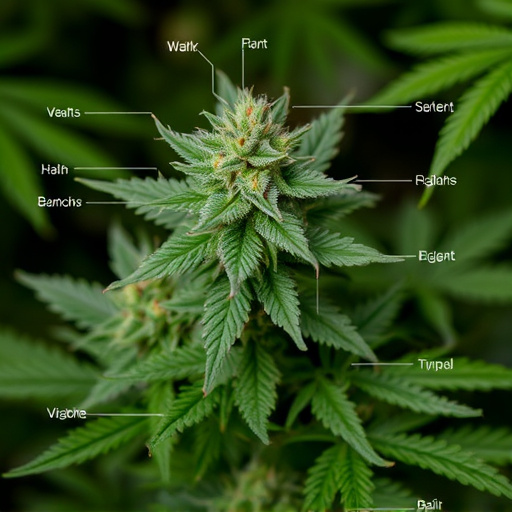
Exploring the Science Behind Food-Drug Interactions with Cannabis
The interaction between food and drugs, including cannabis, is an intriguing field of study. While it’s commonly known that certain foods can enhance or alter the effects of medications, the science behind food-cannabis interactions is complex and multifaceted. Research suggests that what you eat can indeed impact how your body processes and absorbs cannabis compounds, potentially affecting its potency and effectiveness. For instance, fat-soluble compounds like THC (tetrahydrocannabinol), the primary psychoactive component in cannabis, can be enhanced when consumed with foods high in healthy fats. This is because these fats aid in the absorption of THC into the bloodstream, leading to a more potent effect.
When it comes to strains of cannabis for pain relief, understanding these interactions becomes particularly relevant. Different cannabis varieties contain varying levels of cannabinoids and terpenes, which contribute to their unique effects. Consuming specific foods that complement or enhance these compounds could potentially intensify the therapeutic benefits for conditions like chronic pain. For example, combining cannabis with anti-inflammatory foods or those rich in certain vitamins might offer a more comprehensive approach to pain management, though further research is needed to fully comprehend these interactions and their practical applications.
In exploring whether eating certain foods makes weed stronger, we’ve delved into the intricate relationship between nutrition and cannabis efficacy. Understanding different strains of cannabis for pain and their unique effects is key, coupled with the science behind food-drug interactions. The role of nutrition in enhancing cannabis potency highlights the importance of a holistic approach to managing pain, where diet plays as significant a part as the choice of strain. By combining knowledge about strains and nutritional insights, users can optimize their cannabis experiences for maximum relief.
